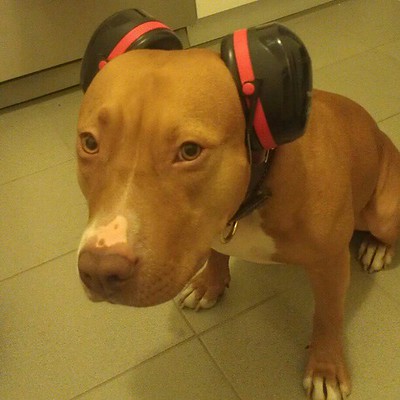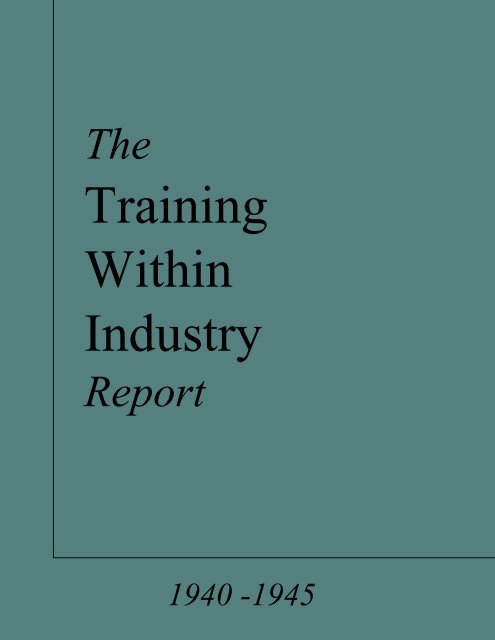Posts Tagged ‘Lessons Learned’
Work is 95% Noise
 There’s a lot of noise at work. I’m not talking about the audible noise you hear in your office or the chatter of your coworkers. I’m talking about the noise purposefully created to slather a layer of importance to things that aren’t all that important.
There’s a lot of noise at work. I’m not talking about the audible noise you hear in your office or the chatter of your coworkers. I’m talking about the noise purposefully created to slather a layer of importance to things that aren’t all that important.
Corporate priorities are created at the company level to move the company in a new direction. There are regular presentations made by the leadership team to educate everyone on the new direction and help everyone think the initiative is important. This takes a lot of time and energy. Then, there are regular meetings held across the company to hear the sermon of the corporate priorities. How much does it cost for everyone in the company to sit through a one-hour sermon on corporate priorities? How much does it cost to do this quarterly or monthly? Because the cost is high and the value is low, corporate priorities have a high noise content.
Monthly reports on the status of the corporate priorities take a lot of work to pull together. These reports tell us how things are going at a high level but are not actionable. Some initiatives are green, some are yellow, and some are red. So what? After reading a monthly report of a corporate initiative, have you ever changed your work in any way? I didn’t think so, because the report is noise.
If your work brings about no changes, the work is noise.
If you complete a talent assessment for your team and no one’s work changes or no one changes teams, the talent assessment is noise. If you are asked to create a summary of your work experience to support a talent assessment and nothing changes after the assessment, the talent assessment program is noise. If you are asked to put together a succession plan and nothing changes, the succession planning process is noise. If you are asked to put together an improvement plan for your team’s culture and no one reads the plan or holds you accountable, the culture improvement program is noise.
If you write a monthly report and no asks questions about it, the monthly reporting process is noise. If you write a charter for a project and no one asks questions about it, the project definition process is noise. If someone sets up a meeting without a defined agenda, that meeting is noise. If no one writes meeting minutes, the meeting is noise. If there will be no decision made at the meeting, don’t go because that meeting is noise.
Work is 95% noise.
If someone asks for help, help them because that is not noise. When you see a problem, do something about it because that’s not noise. When you see something that’s missing, fill the hole because that’s not noise. When something interests you, investigate it because that’s not noise. When your curiosity gets the best of you, that’s not noise. When something is important to you, that’s not noise. When something should be important to someone else, tell them because that’s not noise.
When the work is noise, don’t do it. But if you must do it, do it with minimal effort and do it poorly. Don’t start the work until two weeks after the deadline. With luck, next time they’ll ask someone else to do it. If you think the work is noise, it probably is. Don’t do the work until you’re asked three times. Then, do it poorly.
If the customer won’t benefit, the work is noise. If the work is new and the customer might benefit, the work is not noise. If you are unsure if the work is noise, ask how might customer benefit. If you are pursuing something that will grow the top line, it’s not noise. If you’re unsure if the work is noise, ask how the work might grow the top line.
If it’s noise, say no. That will free up your time to say yes to things that are real.
“Olive with her NYE hearing protection… Muffs on upside down work great!” by Bekathwia is licensed under CC BY-SA 2.0
How do you measure your people?
 We get what we measure and, generally, we measure what’s easy to measure and not what will build a bridge to the right behavior.
We get what we measure and, generally, we measure what’s easy to measure and not what will build a bridge to the right behavior.
Timeframe. If we measure people on a daily pitch, we get behavior that is maximized over eight hours. If a job will take nine hours, it won’t get done because the output metrics would suffer. It’s like a hundred-meter sprint race where the stopwatch measures output at one hundred meters. The sprinter spends all her energy sprinting one hundred meters and then collapses. There’s no credit for running further than one hundred meters, so they don’t. Have you ever seen a hundred-meter race where someone ran two hundred meters?
Do you want to sprint one hundred meters five days a week? If so, I hope you only need to run five hundred meters. Do you want to run twenty-five miles per week? If so, you should slow down and run five miles per day for five days. You can check in every day to see if the team needs help and measure their miles on Friday afternoon. And if you want the team to run six miles a day, well, you probably have to allocate some time during the week so they can get stronger, improve their running stride, and do preventative maintenance on their sneakers. For several weeks prior to running six miles a day, you’ve got to restrict their running to four miles a day so they have time to train. In that way, your measurement timeframe is months, not days.
Over what timeframe do you measure your people? And, how do you feel about that?
Control Volume. If you have a fish tank, that’s the control volume (CV) for the fish. If you have two fish tanks, you two control volumes – control volume 1 (CV1) and control volume 2 (CV2). With two control volumes, you can optimize each control volume independently. If tank 1 holds red fish and tank 2 holds blue fish, based on the number of fish in the tanks, you put the right amount of fish food in tank 1 for the red fish and the right amount in tank 2 for the blue fish. The red fish of CV1 live their lives and make baby fish using the food you put in CV1. And to measure their progress, you count the number of red fish in CV1 (tank 1). And it’s the same for the blue fish in CV2.
With the two CVs, you can dial in the recipe to grow the most red fish and dial in a different recipe to grow blue fish. But what if you don’t have enough food for both tanks? If you give more food to the blue fish and starve the red fish, the red fish will get angry and make fewer baby fish. And they will be envious of the blue fish. And, likely, the blue fish will gloat. When CV1 gets fewer resources than CV2, the fish notice.
But what if you want to make purple fish? That would require red fish to jump into the blue tank and even more food to shift from CV1 to CV2. Now the red fish in CV1 are really pissed. And though the red fish moved to tank 2 do their best to make purple guppies with the blue fish, neither color know how to make purple fish. They were never given the tools, time, and training to do this new work. And instead of making purple guppies, usually, they eat each other.
We measure our teams over short timeframes and then we’re dissatisfied when they can’t run marathons. It’s time to look inside and decide what you want. Do you want short-term performance or long-term performance? And, no, you can’t have both from the same team.
And we measure our teams on the output of their control volumes and yet ask them to cooperate and coordinate across teams. That doesn’t work because any effort spent to help another control volume comes at the expense of your own. And the fish know this. And we don’t give them the tools, time, and training to work across control volumes. And the fish know this, too.
“Purple fish” by The Dress Up Place is licensed under CC BY-SA 2.0
The Discomfort Around Diversity of Perspective
 When your organization doesn’t want to hear your truth because it contradicts a decision they’ve already made, that’s a sign of trouble. It’s a sign they’re going to do what they’re going to and they don’t care all that much about you. But, what if they’re wrong? And what if your perspective could snatch victory from the flames of an impending train wreck? As someone who cares about the company and thinks it would benefit from hearing what you have to say, what do you do?
When your organization doesn’t want to hear your truth because it contradicts a decision they’ve already made, that’s a sign of trouble. It’s a sign they’re going to do what they’re going to and they don’t care all that much about you. But, what if they’re wrong? And what if your perspective could snatch victory from the flames of an impending train wreck? As someone who cares about the company and thinks it would benefit from hearing what you have to say, what do you do?
When you have a culture that makes it clear it’s not okay to share divergent perspectives, you have a big problem.
In domains of high uncertainty, increasing the diversity of perspective is the single most important thing we can do to see things more clearly. In these situations, what matters is the diversity of culture, of heritage, of education, of upbringing, and of experiences. What matters is the diversity of perspective; what matters is the level of divergence among the collective opinions, and what matters most is listening and validating all that diversity.
If you have the diversity of culture, heritage, education, and experience, congratulations. But, if you’re not willing to listen to what that diversity has to say, you’re better off not having it. It’s far less expensive if you don’t have it and far fewer people will be angry when you don’t listen to them. But, there’s a downside – you’ll go out of business sooner.
When you have a perspective that’s different than the Collective’s, share it. And when there are negative consequences for sharing it, accept them. And, rinse and repeat until you get promoted or fired.
“A Sense of Perspective” by dolbinator1000 is licensed under CC BY 2.0
How To Grow Leaders
 If you want to grow leaders, meet with them daily.
If you want to grow leaders, meet with them daily.
If you want to grow leaders, demand that they disagree with you.
If you want to grow leaders, help them with all facets of their lives.
If you want to grow leaders, there is no failure, there is only learning.
If you want to grow leaders, give them the best work.
If you want to grow leaders, protect them.
If you want to grow leaders, spend at least two years with them.
If you want to grow leaders, push them.
If you want to grow leaders, praise them.
If you want to grow leaders, get them comfortable with discomfort.
If you want to grow leaders, show them who you are.
If you want to grow leaders, demand that they use their judgment.
If you want to grow leaders, give them just a bit more than they can handle and help them handle it.
If you want to grow leaders, show emotion.
If you want to grow leaders, tell them the truth, even when it creates anxiety.
If you want to grow leaders, always be there for them.
If you want to grow leaders, pull a hamstring and make them present in your place.
If you want to grow leaders, be willing to compromise your career so their careers can blossom.
If you want to grow leaders, when you are on vacation tell everyone they are in charge.
If you want to grow leaders, let them chose between to two good options.
If you want to grow leaders, pay attention to them.
If you want to grow leaders, be consistent.
If you want to grow leaders, help them with their anxiety.
If you want to grow leaders, trust them.
If you want to grow leaders, demonstrate leadership.
“Mother duck and ducklings” by Tambako the Jaguar is licensed under CC BY-ND 2.0
The Illusion of Control
 Unhappy: When you want things to be different than they are.
Unhappy: When you want things to be different than they are.
Happy: When you accept things as they are.
Sad: When you fixate on times when things turned out differently than you wanted.
Neutral: When you know you have little control over how things will turn out.
Anxious: When you fixate on times when things might turn out differently than you want.
Stressed: When you think you have control over how things will turn out.
Relaxed: When you know you don’t have control over how things will turn out.
Agitated: When you live in the future.
Calm: When you live in the present.
Sad: When you live in the past.
Angry: When you expect a just world, but it isn’t.
Neutral: When you expect that it could be a just world, but likely isn’t.
Happy: When you know it doesn’t matter if the world is just.
Angry: When others don’t meet your expectations.
Neutral: When you know your expectations are about you.
Happy: When you have no expectations.
Timid: When you think people will judge you negatively.
Neutral: When you think people may judge you negatively or positively.
Happy: When you know what people think about you is none of your business.
Distracted: When you live in the past or future.
Focused: When you live in the now.
Afraid of change: When you think all things are static.
Accepting change: When you know all things are dynamic.
Intimidated: When you think you don’t meet someone’s expectations.
Confident: When you know you did your best.
Uncomfortable: When you want things to be different than they are.
Comfortable: When you know the Universe doesn’t care what you think.
“Space – Antennae Galaxies” by Trodel is licensed under CC BY-SA 2.0
When You Have Disagreement
 When you have nothing to say, don’t say it.
When you have nothing to say, don’t say it.
But, when you have something to say, you must say it.
When you think your response might be taken the wrong way, it will.
When you take care to respond effectively, your response might be taken the wrong way.
When you have disagreement, there’s objective evidence that at least two people are thinking for themselves.
When you have disagreement, confrontation is optional.
When you have disagreement, everyone can be right, even if just a little.
When you have disagreement, that says nothing about the people doing the disagreeing.
When you have disagreement at high decibels, that’s an argument.
When you have disagreement, disagreeing on all points is a choice.
When you have disagreement, if you listen to sharpen your response, it’s a death spiral.
When you have disagreement, it’s best to disagree wholeheartedly and respectfully.
When you have disagreement, if you listen to understand, there’s hope.
When you have disagreement, it’s a disagreement about ideas and not moral character.
When you have disagreement, intentions matter.
When you have disagreement, decision quality skyrockets.
When you have disagreement, thank your partner in crime for sharing their truth.
When you have disagreement, there is sufficient trust to support the disagreement.
When you have disagreement, sometimes you don’t, but you don’t know it.
When you have disagreement, converging on a single point of view is not the objective.
When you have disagreement about ethics, you may be working at the wrong company.
When you have disagreement, there are no sides, only people doing their best.
When you have disagreement, the objective is understanding.
When you have disagreement, it’s the right thing to have.
When you have disagreement, there may be disagreement on the topic of the disagreement.
When you have disagreement, you are a contributing member, even if you stay quiet.
When you have disagreement, why not be agreeable?
When you have disagreement, it’s okay to change your mind.
When you have disagreement, you may learn something about yourself.
“Day 7: I disagree” by Stupid Dingo is licensed under CC BY 2.0
What do you want?
 If you want a promotion, do the right thing.
If you want a promotion, do the right thing.
If you do the right thing, be prepared to be misunderstood.
If you want the credit, you don’t want the best outcome for all.
If you want to have focus, spend time outside.
If you want to have more control, give it away.
If you want to be happy, want what you have.
If you want to be praised, ask yourself why.
If you want to have focus, get your sleep.
If you want fame, once you get it you probably won’t.
If you want more influence, spend the next decade helping others.
If you want to make progress, demonstrate a healthy disrespect for the Status Quo.
If you want to make a difference, say thank you.
If you want to do what you love, maybe you should consider loving what you do.
If you want to have focus, get your exercise.
If you want to feel better about yourself, help someone who has a problem.
If you want to be more productive, it’s better to be more effective.
If you want to make change, point to the biggest problems and solve them.
If you want to be right, don’t.
If you want loyalty, take responsibility for the bad stuff.
If you want to be successful, same some of your energy for your family.
If you want to make progress, start where you are.
If you want to be happy, you have to decide that what you have is enough.
If you want to preserve your legacy, develop young talent.
If you want respect, be kind.
If you want to be understood, you may not do what’s right.
If you want to do better work, work fewer hours.
If you want to work on great projects, say no to good ones.
“That is the Question” by cogdogblog is licensed under CC BY 2.0
Musings on Skillfulness
 Best practices are good, but dragging projects over the finish line is better.
Best practices are good, but dragging projects over the finish line is better.
Alignment is good, but not when it’s time for misalignment.
Short-term thinking is good, as long as it’s not the only type of thinking.
Reuse of what worked last time is good, as long as it’s bolstered by the sizzle of novelty.
If you find yourself blaming the customer, don’t.
People that look like they can do the work don’t like to hang around with those that can do it.
Too much disagreement is bad, but not enough is worse.
The Status Quo is good at repeating old recipes and better at squelching new ones.
Using your judgment can be dangerous, but not using it can be disastrous.
It’s okay to have some fun, but it’s better to have more.
If it has been done before, let someone else do it.
When stuck on a tricky problem, make it worse and do the opposite.
The only thing worse than using bad judgment is using none at all.
It can be problematic to say you don’t know, but it can be catastrophic to behave as if you do.
The best way to develop good judgment is to use bad judgment.
When you don’t know what to do, don’t do it.
“Old Monk” by anahitox is licensed under CC BY 2.0
How will you allocate your time differently?
I don’t like resolutions, but I do like looking back to assess how spent my time differently over the previous year. Below is a short exercise that could help you get ready for 2021.
Below are some questions intended to help you assess how you spent your time differently in 2020. Take fifteen seconds, or so, to think through each one.
Did you spend more time with your family or less?
Did you spend more time helping yourself or others?
Instead of commuting, what did you do with your time?
Did you work more hours or fewer?
Did you spend more time on your mental/spiritual health or less?
Did you take more vacation days or fewer?
Instead of eating out, what did you do with that time?
Did you exercise more or less?
What did you do with your time freed by reduced business travel do more?
Did you participate in more meetings or fewer?
Did you sleep more or less?
Grab a pen and paper (or print out the text below) and let’s go through the rest of the exercise.
What are the top three questions that caused the strongest emotional response? (Write them down.) For those three questions, think through three scenarios: A) 2021 is just like 2020. B) 2021 amplifies the changes you experienced in 2020. C) 2021 is just like 2019.
For each scenario, write down how you’d allocate your time differently in 2021.
The question that caused the strongest emotional response:
_________________________________________________________________________
With regard to the question above, how would you allocate your time differently in 2021?
Scenario A (same as 2020) ____________________________________________________
Scenario B (amplified changes) _________________________________________________
Scenario C (same as 2019) ____________________________________________________
The question that caused the second strongest emotional response:
________________________________________________________________________
With regard to the question above, how would you allocate your time differently in 2021?
Scenario A (same as 2020) ___________________________________________________
Scenario B (amplified changes) ________________________________________________
Scenario C (same as 2019) ____________________________________________________
The question that caused the third strongest emotional response:
________________________________________________________________________
With regard to the question above, how would you allocate your time differently in 2021?
Scenario A (same as 2020) __________________________________________________
Scenario B (amplified changes) _______________________________________________
Scenario C (same as 2019) ___________________________________________________
My list of questions likely missed important questions for you. You may want to go back and ask yourself other questions and see if your emotional response is strong enough to displace the top three you identified above.
This little exercise doesn’t generate resolutions, nor will it tell you how to allocate your time in 2021. But, I hope it helps you more skillfully navigate the uncertainty that 2021 is certain to bring.
Happy New Year. And thanks for reading.
“Sundial” by Nigel_Brown is licensed under CC BY 2.0
The Foundation of Leadership Development — Work Products
 Leadership development is a good idea in principle, but not in practice. Assessing a person against a list of seven standard competencies does not a leadership development plan make. Nor does a Meyers-Briggs assessment or a strengths assessment. The best way I know to describe the essence of leadership development is through a series of questions to assess and hire new leaders.
Leadership development is a good idea in principle, but not in practice. Assessing a person against a list of seven standard competencies does not a leadership development plan make. Nor does a Meyers-Briggs assessment or a strengths assessment. The best way I know to describe the essence of leadership development is through a series of questions to assess and hire new leaders.
Here’s the first question: Is this person capable of doing the work required for this leadership position? If you don’t start here, choose the person you like most and promote (or hire) them into the new leadership position. It’s much faster, and at least you’ll get along with them as the wheels fall off.
Next question: In this leadership position, what work products must the leader create (or facilitate the creation of)? Work products are objective evidence that the work has been completed. Examples of work products: analyses, reports, marketing briefs, spreadsheets, strategic plans, product launches, test results for new technologies. Here’s a rule: If you can’t define the required work products, you can’t define the work needed to create them. Here’s another rule: If you can’t define the work, you can’t assess a candidate’s ability to do that work. And if you can’t assess a candidate’s ability to the work, you might as well make it a popularity contest and hire the person who makes the interview committee smile.
Next question: Can the candidate show work products they’ve created that fit with those required for the leadership position? To be clear, if the candidate can show examples of all the flavors of work products required for the position, it’s a lateral move for the candidate. That’s not a bad thing, as there are good reasons candidates seek lateral positions (e.g., geographic move due to family or broadening of experience – new product line or customer segment). And if they’ve demonstrated all the work products, but the scope and/or scale are larger, the new position, the new position is a promotion for the candidate. Here’s a rule: if the candidate can’t show you an example of a specific work product or draw a picture of one on the whiteboard, they’ve never done it before. And another rule: when it comes to work products, if the candidate talks about a work product but can’t show you, it’s because they’ve never created one like that. And talking about work products in the future tense means they’ve never done it. When it comes to work products, there’s no partial credit.
Next question: For the work products the candidate has shown us, are they relevant? A candidate won’t be able to show you work products that are a 100% overlap with those required by the leadership position. The context will be different, the market will be different, and the players will be different. But, a 50-70% overlap should be good enough.
Next question: For the relevant work products the candidate has shown us, do they represent more than half of those required? If yes, go to the next question.
Next question: For the work products the candidate has not demonstrated, has the team done them? If the team has done a majority of them, that’s good. Go to the next question.
Next question: For the work products the candidate or team has not demonstrated, can we partner them with an expert (an internal one, I hope) who has? If yes, hire the candidate.
Leadership development starts with the definition of the new work the leader must be able to do in their next position. And the best way I know to define the work is to compile a collection of work products that must be created in the next position and match that against the collection of work products the leader has created. The difference between the required work products and the ones the leader has demonstrated defines the leadership development plan.
To define the leadership development plan, start with the work products.
And to help the leader develop, think apprenticeship. And for that, see this seminal report from 1945.
The Innovation Mantra
 We have an immense distaste for uncertainty. And, as a result, we create for ourselves a radical and unskillful overestimation of our ability to control things. Our distaste of uncertainty is really a manifestation of our fear of death. When we experience and acknowledge uncertainty, it’s an oblique reminder that we will die. And that’s why talk ourselves into the belief we can control thing we really cannot. It’s a defense mechanism that creates distance between ourselves and from feeling our fear of death. And it’s the obliquity that makes it easier to overestimate our ability to control our environment. Without the obliquity, it’s clear we can’t control our environment, the very thing we wake up to every morning, and it’s clear we can’t control much. And if we can’t control much, we can’t control our aging and our ultimate end. And this is why we reject uncertainty at all costs.
We have an immense distaste for uncertainty. And, as a result, we create for ourselves a radical and unskillful overestimation of our ability to control things. Our distaste of uncertainty is really a manifestation of our fear of death. When we experience and acknowledge uncertainty, it’s an oblique reminder that we will die. And that’s why talk ourselves into the belief we can control thing we really cannot. It’s a defense mechanism that creates distance between ourselves and from feeling our fear of death. And it’s the obliquity that makes it easier to overestimate our ability to control our environment. Without the obliquity, it’s clear we can’t control our environment, the very thing we wake up to every morning, and it’s clear we can’t control much. And if we can’t control much, we can’t control our aging and our ultimate end. And this is why we reject uncertainty at all costs.
Predictable, controllable, repeatable, measurable – overt rejections of uncertainty. Six Sigma – Measure, Analyze, Improve, Control – overt rejection of uncertainty. Standard work – rejection of uncertainty. Don’t change the business model – a rejection of uncertainty. A rejection of novelty is a rejection of uncertainty. And that’s why we don’t like novelty. It scares us deeply. And it scares us because it reminds us that everything changes, including our skin, joints, and hairline. And that’s why it’s so challenging to do innovation.
Innovation reminds us of our death and that’s why it’s difficult? Really? Yes.
Six Sigma is comforting because its programmatic illusion of control lets us forget about our death? Yes.
The aging business model reminds us of our death and that’s why we won’t let it go? Yes.
That’s crazy! Yes, but at the deepest level, I think it’s true.
I understand if you disagree with my rationale. And I understand if you think my thinking is morbid. If that’s the case, I suggest you write down why you think it’s so incredibly difficult to create a new business model, to do novel work, or to obsolete your best work. I’ll stop for a minute to give you time to grab a pen and paper. Okay, now put your pen to paper and write down why doing innovation (doing novel work) is so difficult. Now, ask yourself why that is. And do that three more times. Where did you end up? What’s the fundamental reason why doing new work (and the uncertainty that comes with it) is so difficult to do?
To be clear, I’m not advocating that you tell everyone that innovation is difficult because it reminds them that they’ll die. I explained my rationale to give you an idea of the magnitude of the level of fear around uncertainty so that, when someone is scared to death of novelty, you might help them navigate their fear.
Trying something new doesn’t invalidate what you did over the last decade to grow your business, nor will it replace it immediately, if it all. Maybe the new work will add to what you’ve done over the last decade. Maybe the new work will amplify what’s made you successful. Maybe the new work will slowly and effectively migrate your business to greener pastures. And maybe it won’t work at all. Or, maybe your customers will make it work and bury you and your business.
With innovation, start small. That way the threat is smaller. Run small experiments and share the results, especially the bad results. That way you demonstrate that unanticipated results don’t kill you and, when you share them, you demonstrate that you’re not afraid of uncertainty. Try many things in parallel to demonstrate that it’s okay that everything doesn’t turn out well and you’re okay with it. And when someone asks what you’ll do next, tell them “I don’t know because it depends on how the next experiment turns out.”
When you’re asked when you’ll be done with an innovation project, tell them “I don’t know because the work has never been done before.” And if they say you must give them a completion date, tell them “If you must have a completion date, you do the project.”
When you’re running multiple experiments in parallel and you’re asked what you’ll do next, tell them you’ll do “more of what works and less of what doesn’t.” And if they say “that’s not acceptable”, then tell them “Well, then you run the project.”
We don’t have nearly as much control as our minds want to us believe, but that’s okay as long as we behave like we know it’s true. Uncertainty is uncomfortable, but that’s not a bad thing. In fact, I think it’s a good thing.
If people aren’t afraid, there can be no uncertainty. And if there’s no uncertainty, there can be no novelty. And if there’s no novelty, there can be no innovation. If people aren’t afraid, you’re doing it wrong.
As a leader, tell them you’re afraid but you’re going to do it anyway.
As a leader, tell your team that it’s natural to be afraid and their fear is a leading indicator of innovation.
As a leader, tell them there’s one thing you’re certain about – that innovation is uncertain.
And when things get difficult, repeat the Innovation Mantra: Be afraid and do it anyway.
“Mantra” by j / f / photos is licensed under CC BY-ND 2.0

 Mike Shipulski
Mike Shipulski